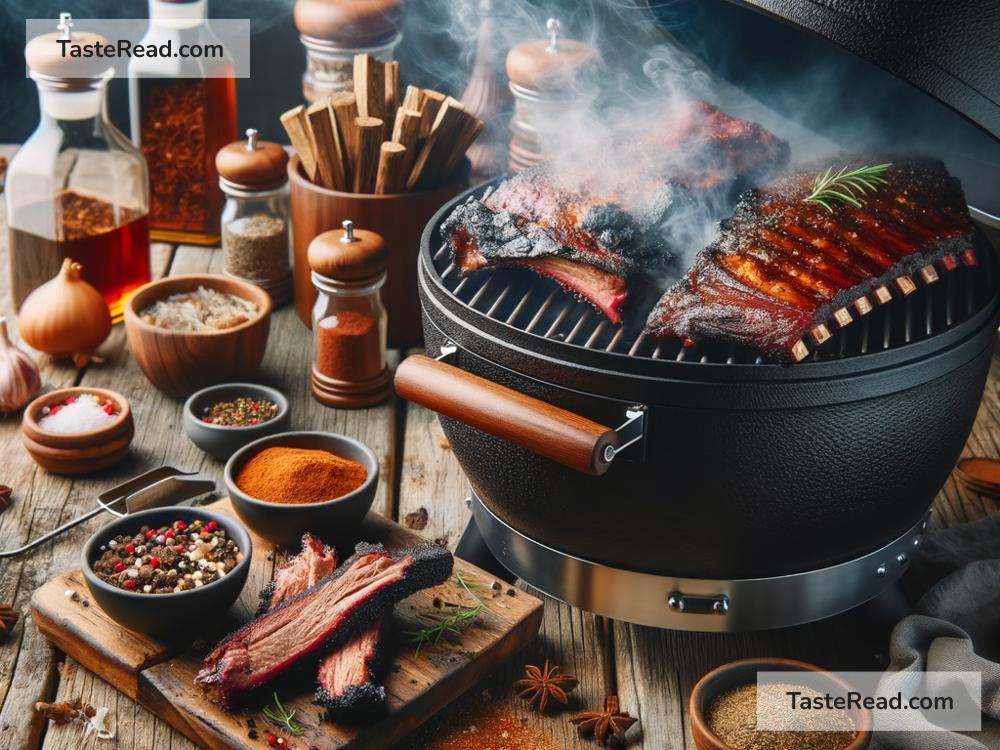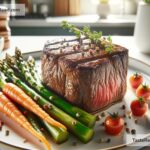The Science of Smoking Meats: Flavor and Preservation
Smoking meats is an ancient cooking technique that has been practiced for thousands of years. What started as a method to preserve food has evolved into a flavorful art form loved by food enthusiasts worldwide. But have you ever wondered what actually happens when you smoke meat? Why does it taste so good, and how does it last longer? In this blog, we’ll dive into the science of smoking meats, exploring how it works, why it’s delicious, and how it preserves food—all in simple English.
What is Meat Smoking?
At its core, meat smoking involves cooking meat slowly over low heat while exposing it to smoke from burning wood. People often use this method for beef, pork, chicken, fish, and even vegetables. Smoking infuses the food with smoky flavors while tenderizing it and, in some cases, extending its shelf life.
The process happens in smokers, grills, or even outdoor pits. The temperature used is typically below 300°F (149°C) and can range from “cold smoking” (below 86°F/30°C) to “hot smoking” (between 200–300°F). Different techniques and wood types are used depending on the desired flavor and outcome.
Why Does Smoked Meat Taste So Good?
The magic of smoked meat lies in its smoky flavor, juicy texture, and tender bite. Several scientific factors work together to create this delicious experience:
-
Smoke and Flavor Molecules
Smoke is produced when wood burns. This smoke contains thousands of flavor molecules, including compounds like guaiacol and syringol, which give smoked food its signature taste. Different types of wood add different flavors. For example, cherry wood gives a sweet fruitiness, while hickory creates a strong, rich smoky taste. Choosing the right wood is like choosing seasoning for your dish—it defines the flavor profile of the meat. -
The Maillard Reaction
As the meat cooks slowly, the heat interacts with the proteins and sugars in the meat to create the Maillard reaction. This reaction is responsible for browning the surface of the meat and developing complex flavors. It’s why the outer crust on smoked brisket or ribs is so tasty. -
Fat and Smoke Absorption
Meat often contains fat, which melts and breaks down during the smoking process. This melted fat absorbs the smoke and becomes infused with flavor. Fat also keeps the meat moist and enhances its overall taste. -
The Bark Formation
Smokers love the “bark”—the crunchy, flavorful crust that forms on the exterior of smoked meat. This happens when spices and seasonings, combined with smoke and heat, create a caramelized coating. Bark is considered the crown jewel of smoked meats, packing bold flavor with every bite.
How Smoking Preserves Meat
Before refrigeration, smoking was one of the main ways to preserve meat for long periods. The preservation process relies on three key factors: dehydration, smoke, and heat.
-
Dehydration
During smoking, some of the moisture inside the meat is removed. Less water means fewer opportunities for harmful bacteria to grow, which helps preserve the meat. Cold smoking, which dries meat without fully cooking it, is particularly effective for preservation. This is how foods like smoked salmon or jerky are made. -
Antimicrobial Properties of Smoke
The compounds in smoke, especially phenols, act as natural preservatives. They help prevent the growth of bacteria and mold on the surface of the meat. Smoke essentially acts as a protective shield, keeping the meat safer to eat for longer periods. -
Salt and Seasoning
Smoking meat often involves brining or rubbing the meat with salt. Salt draws moisture out of the meat and bacterial cells, making it harder for bacteria to survive. Combined with smoking, salt is an important tool for preservation.
Hot Smoking vs. Cold Smoking
The two main types of smoking—hot smoking and cold smoking—serve different purposes.
-
Hot Smoking: Cooks and flavors the meat at the same time. It’s done at higher temperatures (around 200–300°F) and is typically used to prepare ready-to-eat dishes like ribs, pulled pork, or brisket. Hot smoking doesn’t preserve meat over long periods, but it creates tender, flavorful meals.
-
Cold Smoking: Happens at lower temperatures (below 86°F) and is designed to flavor and dry the meat without fully cooking it. This method is often combined with curing. Foods like smoked salmon, bacon, and jerky are made using cold smoking, and they can last much longer.
The Role of Wood in Smoking
The choice of wood plays a big role in meat smoking because each type adds a unique flavor. Here are some popular options:
- Hickory: Strong, bold flavor; great for pork and ribs.
- Mesquite: Intense and earthy; ideal for beef.
- Applewood: Sweet and mild; perfect for chicken and fish.
- Cherrywood: Slightly fruity; pairs well with poultry and ham.
Conclusion
Smoking meat combines science and craftsmanship to create delicious flavors and help preserve food. Understanding how smoke interacts with meat—not just for flavor but also for preservation—makes you appreciate this cooking method even more. Whether you’re indulging in tender ribs, smoky brisket, or savory jerky, know that the technique behind your favorite bites has been refined for centuries. The next time you fire up the smoker, try experimenting with different woods, spices, and techniques to make your own masterpiece!


